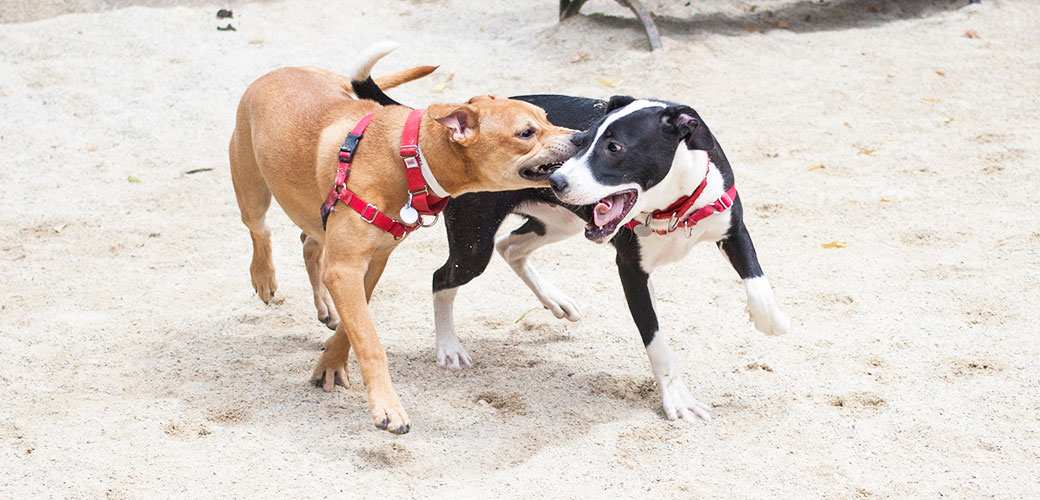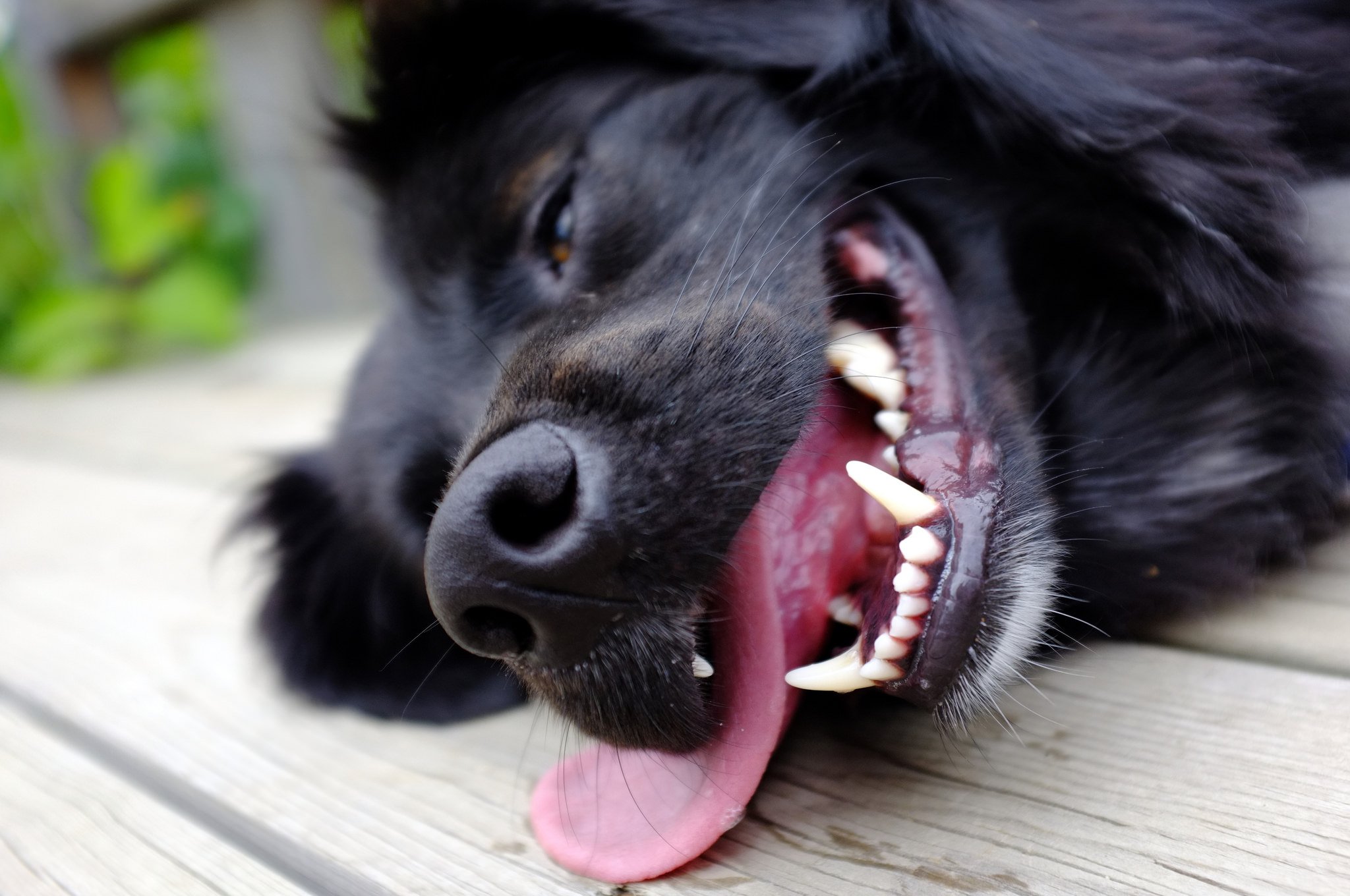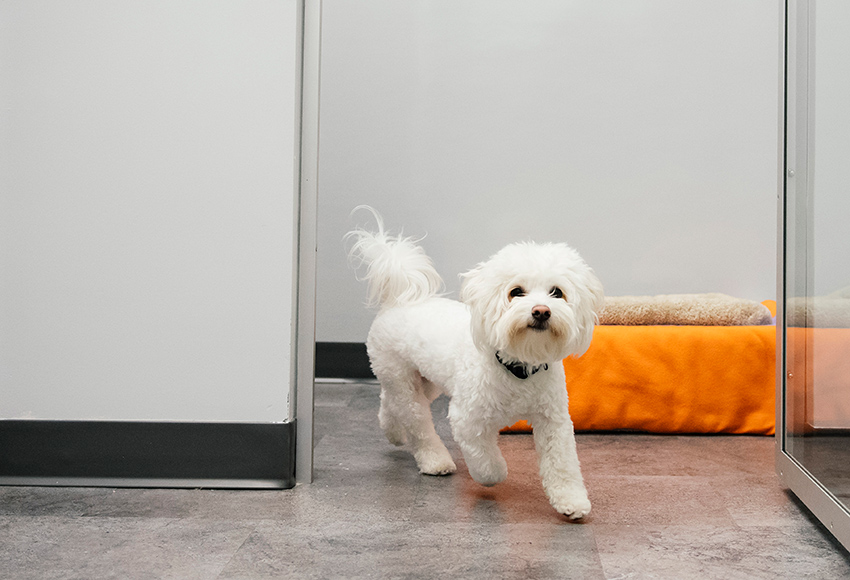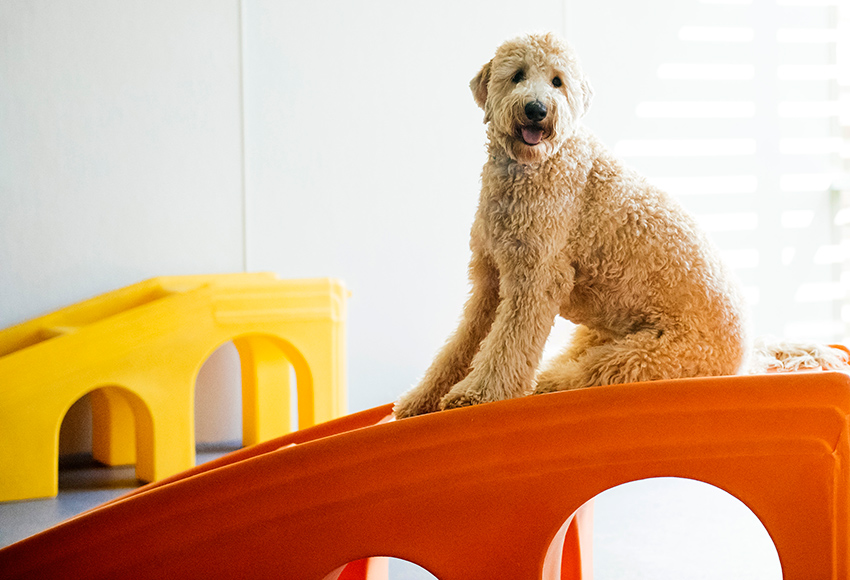Common Misinterpretations in Dog Behaviour
By: Victoria Morrison
Wouldn’t you love to have a conversation with your dog? Although most pet parents feel like they probably know their dog pretty well, occasionally, there are miscommunications between dogs and people, these can lead to behavioural issues, training fatigue, and sometimes aggression.
Misconception #1: Every Growl is an Aggression Growl

It’s easy to think of a growl as a tell-tale sign of aggression, it’s a distinctive sound from a bark and it’s similar to other animals’ aggression sounds, like a cat’s hiss. However, a growl is just another verbal communication, not unlike a bark, according to Off-Leash Dog Play: A Complete Guide to Safety & Fun, not every growl is the same, a soft growl the type that you may hear go up at the end, described by the authors as “playful” means they are excited, whereas, a shorter softer growl might be used to communicate that they wish to stop the behaviour they are currently witnessing but without threat of aggression. So if not all growls are the same, how do dog experts determine an aggression growl from a non aggression growl? The answer is using a combination of indicators, rather than using one piece of information; its better to look at the bigger picture, what is the body, ears, tail, lips, eyes communicating? What do we currently know about the situation and the dog in this situation? This can help you to interpret your dog’s growls as its not going to be beneficial to think of one method of communication as inherently bad and may help in your overall goals of socializing your dog and dog training.
Misconception #2: A Correction is Also a Sign of Aggression

Just like growling, corrections are also not inherently a sign of aggression. A correction basically looks like one dog saying no to another dog. This can become a little hard to understand because if the other dog ignores the corrections, it can, but wont necessarily, build to more aggression-based behaviours. For this reason, I often see pet parents intervene in corrections given from one dog to another, even though a correction, like sniffing, is an important part of dog communications. As Bennet and Briggs explain in Off-Leash Dog Play: A Complete Guide to Safety & Fun; “Adult dogs use correcting behaviors when another dog displays rude or inappropriate behaviours. Appropriate corrections are a part of dog conversations.” They explain the importance of correcting behaviour as such; “If we correct them for giving warning signals they may just stop giving them. If that happens, they lose a vital part of their communication process and may skip the warning and go straight to conflict.” For this reason, its better to look at the method of correction and the ‘fairness’ of that correction. If they say no, and don’t overdo it, your dog is actually showing good signs of socialization. For example, if your dog is getting their tail pulled by a toddler and displays a warning that they do not like that, without biting, the dog is simply saying no to that interaction. If you respect the consent of the dog in that moment, later interactions between the dog and the toddler are less likely to result in aggression.
Misconception #3: Lip Licking is a Sign of Hunger or Interest in Food
:max_bytes(150000):strip_icc()/Dog-licking-lips-GettyImages-510835832-587e47285f9b584db3d011a6.jpg)
Some pet parents will blow into the face of their dog misinterpreting their lip licking as a sign of food interest in whatever is on their owner’s breath, or watch a dog lick their lips when offered a treat but only after they get the trick right. It’s easy to personify this behaviour the way a cartoon character may lick their lips at the thought of a good dinner, but in truth, lip licking is a sign of stress. As explained in Off-Leash Dog Play: A Complete Guide to Safety & Fun, “This signal is very easy to see, but is rarely recognized as a sign of stress in dog owners. The dog will flick his tongue out and lick his lips or nose.” You may want to watch your dog for this behaviour, to ensure you aren’t adding unnecessary stress to your dog in your interactions.
Misconception #4: A Panting Dog is Overheating

Another misinterpretation I often see pet parents have is assuming a dog panting is because they are overheating. Panting is a normal, healthy, bodily response use to regulate body temperature, the same way that a personal sweating does not need intervention or require panic, simply because they are sweating. As explained in A Short Technical Report on Thermoregulation in Dogs and the Pathophysiology of Hyperthermia; “In dogs, this vasodilation [the widening of blood vessels] is limited to the tongue and areas with little hair such as ears. Haircoats limit the effectiveness of vasodilation elsewhere and dogs have no sweat glands except in their foot pads.” Although it’s a normal response, very quick panting can sometimes be an indicator of stress or over heating, so again its important to look at this in context to the situation. A slow pant with a relaxed body, means your dog is regulating their temperature and there is no need to worry.
Misconception #5: A Relaxed dog is Not Having Fun

Depending on your dog, you may or may not have witnessed this last one. But it is a common misconception for pet parents. When a dog goes into a dog park or dog daycare setting, it’s easy to assume the dog will run over to the other dogs in the room and play and roll with each other until its time to go home. Pet parents may expect their dog to act the same way they do in a one on one dog experience. In truth, not all dogs play or react the same way to a pack setting. It is quite normal to see different motivators play out in a pack setting, maybe your dog only wants to play fetch, or dig, or cuddle or relax. These are all normal and healthy ways of expressing their idea of fun in a pack environment. Think of it like a party, not everyone dances, or participates in everything, but it doesn’t mean they are having a poor time. What you should be looking for instead of activity is the body language of the dog: do they look relaxed, are their activities harming any other dogs, how do they react when other dogs approach them? These are going to be your true indicators of their comfort level.
We can’t talk to the animals, but we can understand them and with this understanding we can provide better relationships with our dogs. An environment where your dog can communicate their feelings with you, means that they will be more trusting and loving to you.







